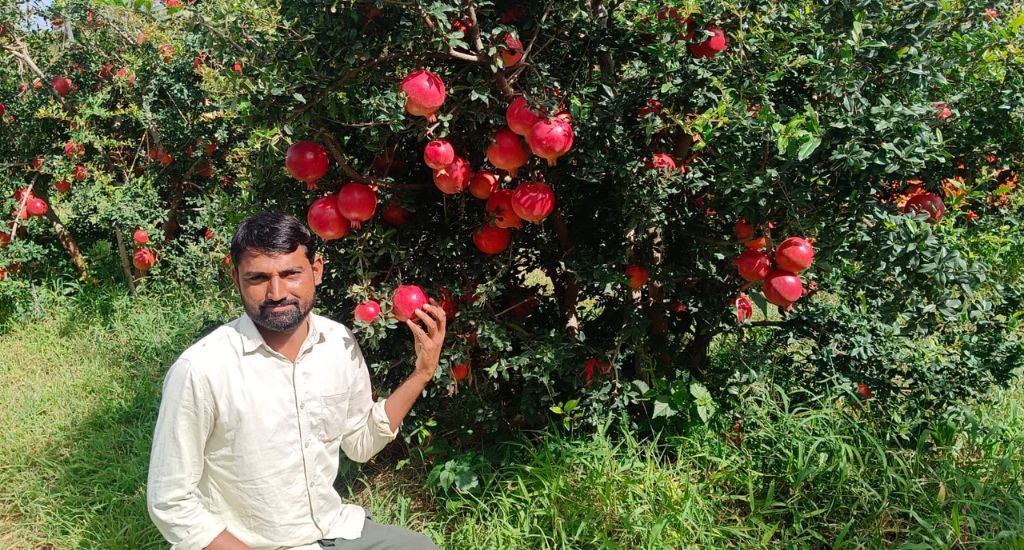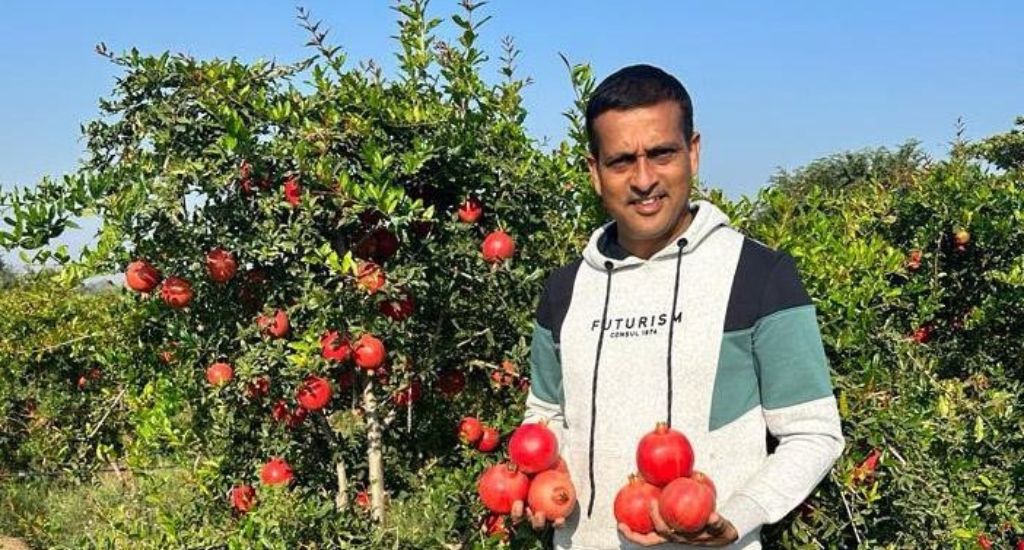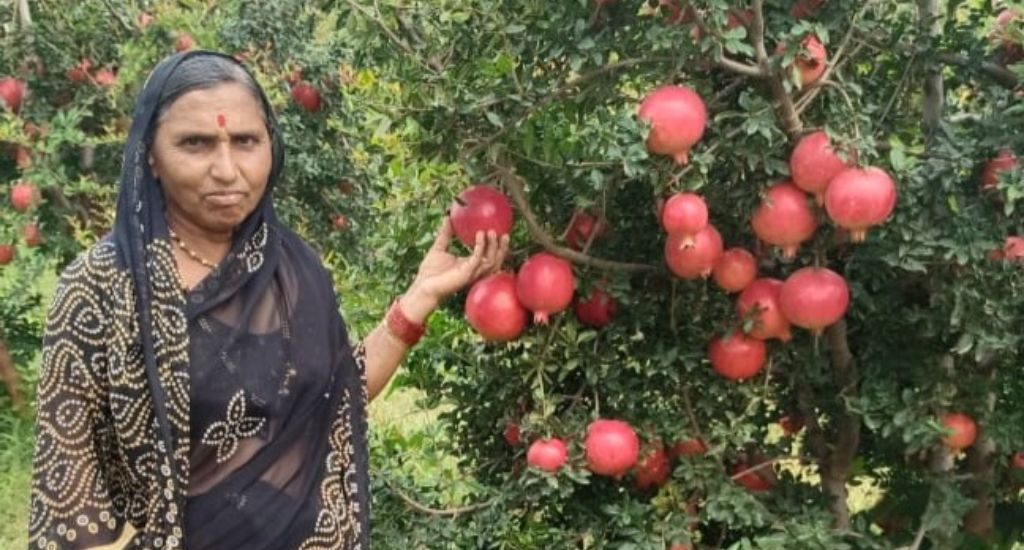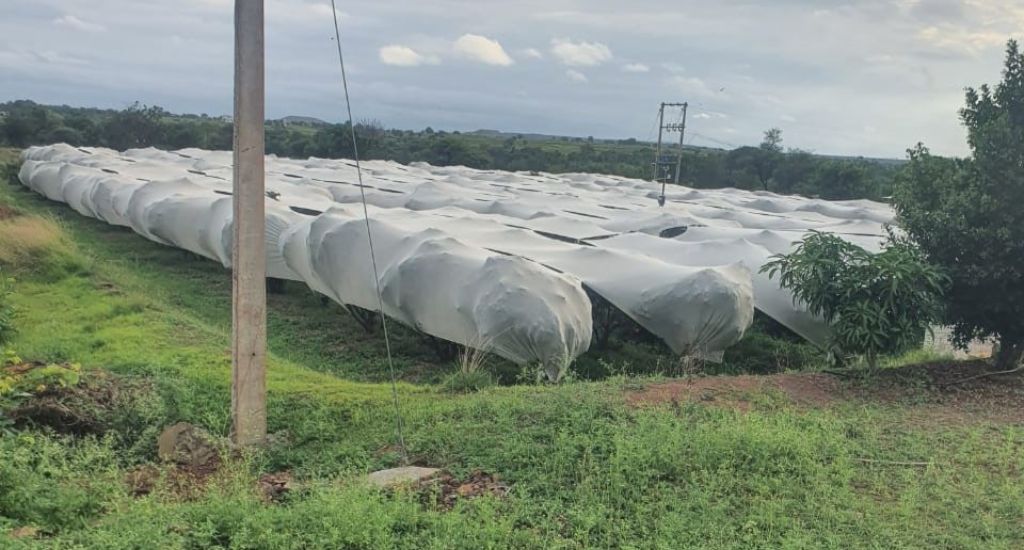
Maharashtra village morphs into pomegranate haven
Pomegranate growers in Maharashtra have much to thank farmers of Satmane village for their pioneering initiative to make orchards climate-resilient.

Pomegranate growers in Maharashtra have much to thank farmers of Satmane village for their pioneering initiative to make orchards climate-resilient.
Pomegranates dangle like rubies from shoulder-high trees on farmer Vinod Jadhav’s 25-acre orchard in Satmane village of Nashik district in Maharashtra. These fruits, with their deep red hue and glossy allure, transcend the norm, commanding attention beyond typical supermarket offerings.
“We don’t have to go to the mandi. Our fruits are so attractive that the harvest is picked up from our farms by traders who export them,” said the 42-year-old farmer, reflecting the village’s triumph over challenges like sunburn, hailstorms, fungal diseases and sap-sucking moths.
Satmane’s pomegranate growers pioneered climate resilience by cocooning their orchards in anti-hail nets. While these nets are familiar in Himachal Pradesh’s apple orchards, Satmane innovatively applied them to pomegranates. The result? Export-quality fruits that led to the village, with 355 hectares devoted to the fruit’s cultivation, being crowned the “Village of Exportable Pomegranate Producers” by the state’s department of agriculture.

Pomegranate, called dalim in Marathi, is a crucial fruit crop in Maharashtra, especially in districts like Solapur, Nashik, Sangli, Satara, Ahmednagar and Pune, owing to its suitability for arid and semi-arid regions.
Pomegranate found its haven in Satmane, the once drought-prone village that transformed its fate by embracing technology. In 1988, facing water scarcity, they adopted drip irrigation. Eight years later, a collective effort laid an 18,000-foot pipeline from Rawalgoan, 6km from the Mosam river. Today, Satmane boasts 300 farmers with orchards and three farmer-producer companies.
Also Read: How these farmers grow more crop per drop
In 1983, Yashwant Jeevan Jadhav introduced pomegranates to Satmane, planting 600 saplings of the Ganesh variety. Despite severe drought in the following years, he saved his plants by manually irrigating them. His success inspired others to join the pomegranate revolution.

Old orchards host popular varieties like Ganesh, G-137 and Mridula, while newer ones showcase Phule Bhagwa, developed by the Mahatma Phule Krishi Vidyapeeth, or the Super Bhagwa. An acre accommodates 250 trees, with each tree yielding 30-35 kg of fruits annually.
Pomegranate plants flower and bear fruit throughout the year, with flowering induced during different periods — June-July (mrig bahar), September-October (hasta bahar) and January-February (ambe bahar) — based on precipitation patterns. Unseasonal rain and hailstorms in April and November affect various crops, including pomegranates. Last year, Nashik was affected the most, where crops in 145 villages were damaged.
During summer months, when daytime temperatures can soar to 45° Celsius — the fruit can withstand heat up to 35° Celsius — pomegranate orchards encounter an increase in sunburn incidents. In November-December, hailstorms strike, blighting the crops.

“As the fruits grow in the rainy season, the prevalence of diseases is high. The risk of deterioration of fruit quality due to excessive heat at harvest and the problem of fruit staining due to sunburn during fruit growth had plagued the orchards. Hailstorms and unseasonal rain added to the woes of the fruit growers,” said Dr Sachin Hire, assistant professor at the horticulture department of Mahatma Phule Krishi Vidyapeeth.
Rabindra Dhansingh Pawar, divisional president of Maharashtra State Pomegranate Growers Association, recalls a time when sunburn and hailstorms marred his orchard’s yield. Importing polynets from Italy in 2015 for Rs 1.5 lakh, Pawar pioneered a change on his 90-acre orchard.
Also Read: This Maharashtra village is home to 10 aromatic rice varieties
“People laughed at me, but I was able to win the battle against sunburn and hailstorms. Now every orchard owner in Satmane and neighbouring villages is using HDPE (High Density Poly Ethylene) nets to shield their orchards from fickle weather,” the 57-year-old said.
Produce from his orchard is bought by customers in India and also exported to Europe, the Gulf region, and other Asian countries.

Installing anti-hail nets costs around Rs 40,000 an acre. The white polynet sheets last for about four seasons. Farmers appreciate the relief these nets provide, as rebuilding an orchard after destruction by rain or hailstorms takes three to four years.
Among the farmers who use anti-hail nets is Sagar Bhamre, a 32-year-old civil engineering graduate, who covered his 4-acre orchard in 2021.
“Now, as the orchards are less prone to fruit spots and thrips, they require less pesticides,” he said. “We save on water too as the irrigation cycle during summer months is reduced to just once in three days. Additionally, damage to the crops from birds has decreased too.”
With an acre yielding 8-10 tonnes, and pomegranates fetching Rs 150 to Rs 175 a kg, Satmane’s farmers are reaping prosperity. The state’s agriculture department, acknowledging the merits of anti-hail nets, now plans to subsidise their installation.
Also Read: Himachal apples give way to pomegranates
The lead image at the top shows farmer Sagar Bhamre in his pomegranate orchard. (Photo by Hiren Kumar Bose)
Hiren Kumar Bose is a journalist based in Thane, Maharashtra. He doubles as a weekend farmer.